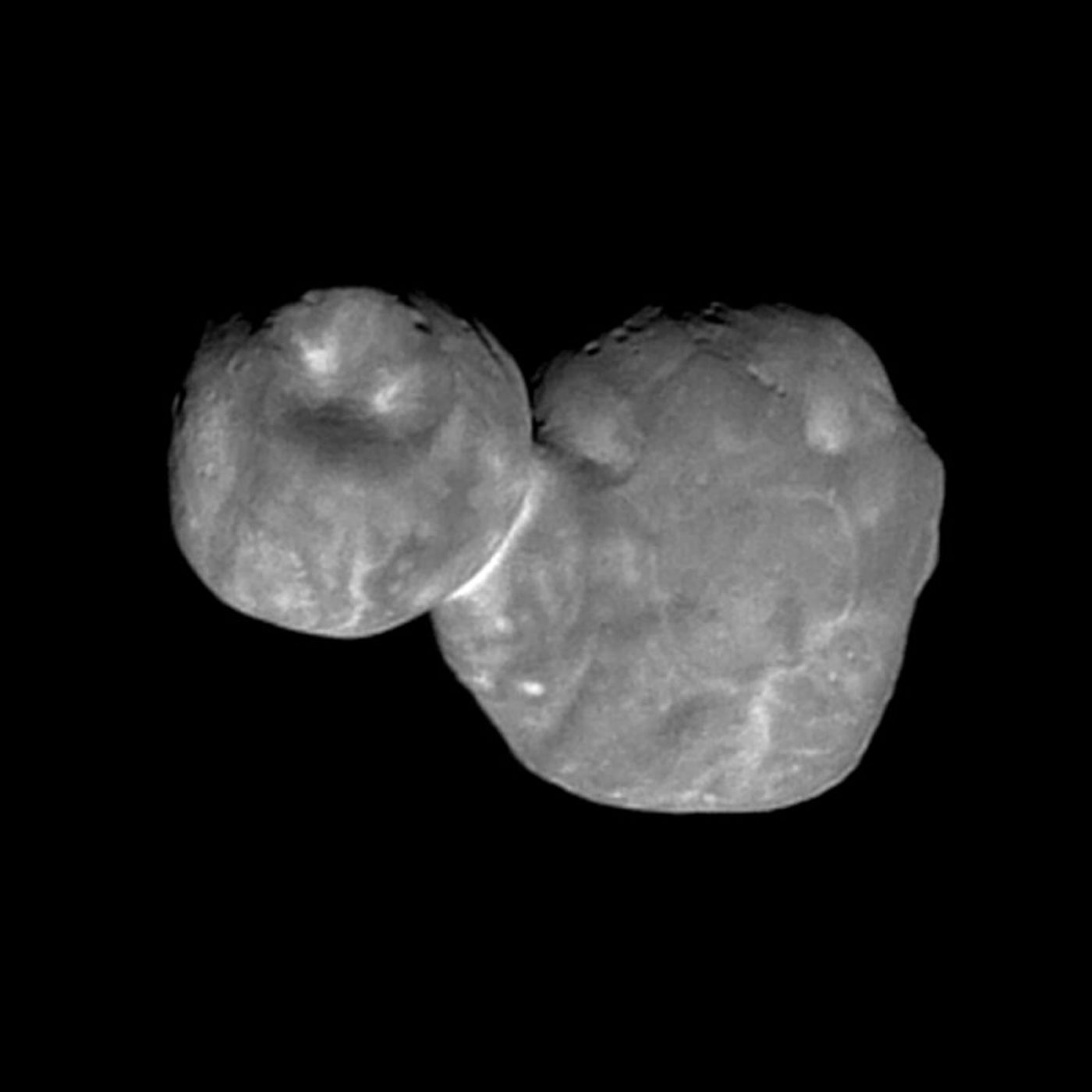New Horizons Beams Back a Clearer Picture of Ultima Thule
On New Year’s Day, NASA’s New Horizons spacecraft made history after skimming past the Kuiper Belt Object (KBO) Ultima Thule. A few days later, scientists received their first close-up image of the distant world, a blurry picture that validated the long-debated notion that Ultima Thule sported a ‘snowman’-like structure. But fast-forward to today, and NASA is already sharing an even better image.
New Horizons was approximately 17,000 miles away from Ultima Thule when it grabbed the initial image, but it wouldn’t be the last. Clearer and more detailed images were captured as the spacecraft got closer to Ultima Thule, but downloading them would prove time-consuming. New Horizons is now more than 4.13 billion miles away from Earth, and as you might come to expect, this small detail adds quite a bit of data latency to the two-way communication line.
Image Credit: NASA/JHU-APL/SWRI
The latest image, shown above, was captured by New Horizons’ wide-angle Multicolor Visible Imaging Camera (MVIC) on the spacecraft’s Ralph instrument from approximately 4,200 miles away – that’s about four times closer than before. Given the circumstances, NASA can calculate that the image boasts a resolution of 440 feet per pixel.
Related: These are the images of Pluto that New Horizons captured during its previous historical fly-by
NASA scientists modified the original image with photo-editing software to improve its sharpness, a process that intensifies the body’s surface details to make them more discernible. Some of the most visible features are the large impressions at the top of Ultima Thule in the image. It remains to be seen if these are impact craters or if other processes were responsible for their formation. Another notable detail is the bright ‘collar’ appearing between the larger and smaller lobes that encompass the ‘snowman’-like structure.
Astronomers remain puzzled about how Ultima Thule formed, but several theories exist. One of the most probable of those proposes that the two lobes came together during a low-speed collision; this would have prevented the bodies from shattering upon impact. Instead, they became conjoined as we see here.
"This new image is starting to reveal differences in the geologic character of the two lobes of Ultima Thule, and is presenting us with new mysteries as well," said Alan Stern, the Principal Investigator of the New Horizons mission. "Over the next month, there will be better color and better resolution images that we hope will help unravel the many mysteries of Ultima Thule."
Related: A near-twin of New Horizons' Ralph instrument will be used to study Jupiter's Trojan asteroids
In case you were wondering, New Horizons did capture higher resolution images of Ultima Thule during its fly-by initiative, but it’ll be a while longer before scientists on Earth receive them due to the latency. The next batch of images should arrive in just a few more weeks, so stay tuned!
Source: Phys.org









